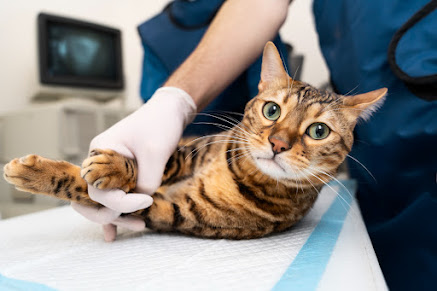Exploring the Risks and Benefits of Raw Food Diets for Dogs
As pet owners, we want the best for our furry friends, including providing them with a healthy and nutritious diet. With the abundance of options available in the pet food industry, selecting the right diet for your dog can be overwhelming. One diet that has gained popularity in recent years is the raw meat-based diet (RMBD). In this comprehensive article, we will delve into the world of raw feeding, examining its potential benefits as well as the risks associated with this type of diet. By understanding the science behind raw food diets for dogs, you can make an informed decision about what's best for your beloved canine companion.
What is a Raw Meat-Based Diet (RMBD)?
Raw meat-based diets can be either homemade or commercially sourced. Commercial RMBDs come in various forms such as frozen, freeze-dried, or fresh, and some may even resemble traditional dry kibble with a raw meat coating. Additionally, there are raw-dried and freeze-dried treat products available on the market. These diets typically include muscle meats, bones (either ground or whole), and organ meats.
1.The Risks of Raw Food Diets:
- Nutritional Imbalances:
One of the significant concerns with raw food diets, both homemade and commercial, is the potential for nutritional imbalances. Dogs require a precise balance of nutrients to support their health and development. Deficiencies or excessive intakes of specific nutrients, such as calcium: phosphorus imbalances, can pose a significant risk to their overall well-being. It is essential to provide a balanced and complete diet that meets all the nutritional requirements of your dog.
The Association of American Feed Control Officials (AAFCO) is an internationally recognized organization that establishes nutritional standards for pet food. It is highly recommended to choose a diet that is AAFCO recognized to ensure your dog receives the correct nutrients for their specific life stage, whether it is growth, pregnancy/nursing, or adult life stages. Feeding an incomplete or unbalanced diet can jeopardize your pet's health.
- Animal Health Risks:
Several studies have highlighted potential health risks associated with raw food diets. These risks include nutritional imbalances, the ingestion of bones, diet-induced hyperthyroidism, and bacterial infections. Bacterial contamination in the diet can lead to gastrointestinal issues such as vomiting and diarrhea. Bones, while beneficial for some aspects of dental health, can also cause intestinal trauma, obstruction, and dental damage. Constipation due to lack of fiber and undigested bones has been reported in dogs on raw food diets.
- High Risk of Bacterial Contamination:
Raw meat, just like in human diets, can be a source of bacterial contamination, exposing both dogs and humans to dangerous bacteria. Salmonella, Listeria, Campylobacter, Clostridium, and E.coli are examples of bacteria commonly associated with food poisoning. Notably, dogs consuming raw food diets can shed these bacteria in their feces, posing a risk of infection to humans. This is especially concerning for vulnerable populations such as young children, the elderly, pregnant women, and immunosuppressed individuals. Parasitic contamination, including tapeworms, is also a potential concern, as it can cause hydatid disease in humans.
2.The Potential Benefits of Feeding Raw Food Diets:
- Dental Health and Enrichment:
Raw bones offer a natural way to clean teeth, provide essential nutrients, and contribute to the overall enrichment of your dog's diet. Chewing on raw bones can help maintain healthy teeth and gums while providing necessary mental stimulation.
- Lower Carbohydrate Content:
RMBDs are typically lower in carbohydrates, which can be advantageous for dogs on weight loss or weight maintenance plans. Reducing carbohydrate intake can help manage weight more effectively and promote better overall health.
- Allergies and Sensitivities:
Some dogs may have food sensitivities or allergies that make it challenging to find commercially prepared diets that suit their needs. For these dogs, a home-prepared diet, such as a raw food diet, can provide better control over the ingredients and help exclude specific allergens. However, it is crucial to work with a veterinary nutritionist to ensure the diet is nutritionally appropriate, complete, and balanced.
Ingredient Control:
Raw food diets give owners the opportunity to have more control over the ingredients they feed their dogs. By selecting and preparing the ingredients themselves, owners can ensure that their dogs consume only high-quality and carefully chosen ingredients, avoiding potential additives or fillers.
Conclusion:
Choosing the right diet for your dog is a crucial decision that can significantly impact their health and well-being. While raw food diets offer potential benefits such as dental health, lower carbohydrate content, and ingredient control, it's important to consider the associated risks. Nutritional imbalances, animal health risks, and the high potential for bacterial contamination should not be taken lightly. Before embarking on a raw food diet for your dog, consult with a veterinary nutritionist to develop a nutritionally complete and balanced diet tailored to your dog's specific needs. By making an informed decision and prioritizing your dog's nutritional requirements, you can provide them with a diet that promotes their overall health and longevity.






